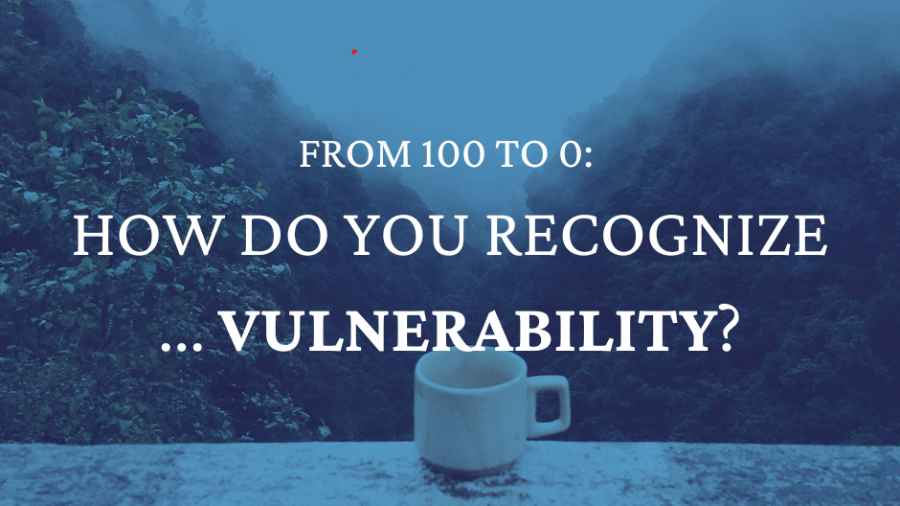Despite the growing focus on topics like mindfulness and resilience, stress, fatigue, and burnout remain constant companions for many in the workplace. However, vulnerability is more critical than stress level alone. Recognizing vulnerability is essential, as it significantly raises the risk of developing physical and psychological health issues.
The sentence that startled me came about 45 minutes into the coaching session. The client and I had met a few times before, discussing the challenges he faced as a team leader. I asked him what thoughts, feelings, and sensations arose when he reflected on a specific conflict situation. He answered, and then added, almost as a casual afterthought, “Well, and I have severe back pain, tinnitus, and I can’t sleep through the night.” “How long have you been having these issues for?” I asked. “Oh, for a couple of years now,” he said dismissively, as if responding to a question about tomorrow’s weather—something he has no power to change.
Vulnerability, in contrast to resilience, refers to a state in which a person is more prone to developing physical and mental illnesses due to ongoing stress. The physical consequences of vulnerability include cardiovascular diseases such as hypertension and heart attacks, along with specific ailments such as back pain, tinnitus, and digestive problems. On the psychological side, the spectrum ranges from mood swings and depression to anxiety/panic disorders and burnout.
Molecules create emotions and emotions create molecules
Stress researcher Hans Selye defines stress as the nonspecific response of our body to any type of demand. Triggers of stress can be physical, emotional, or social stressors. Therefore, stress is neither inherently positive nor negative; it is simply the body’s natural chain of reactions to uncertainty.
In response to stress, the body reacts with a rapid and well-orchestrated relay along the hypothalamic-pituitary-adrenal (HPA) axis. Adrenaline and noradrenaline elevate blood pressure and heart rate, while cortisol is released from the adrenal glands to assist the body in generating sufficient energy for its stress response.
A central role in this ‘command chain’ is played by the prefrontal cortex, which is responsible for thoughtful and composed decision-making in the brain. It regulates essential functions such as action planning, emotion regulation, affect and impulse control, decision-making, combinatorial thinking, and much more.
Top-down is better than bottom-up—at least when it comes to the stress response
When periods of stress alternate with rest and restorative sleep, the system stays balanced. Stress is followed by recovery, which is then followed by more stress, and so on. However, with chronic stress, the stress axis becomes continuously activated. Cortisol, adrenaline, and noradrenaline are released constantly, leading to elevated blood pressure and heart rate. The balanced stress response tips over, weakening the function of the prefrontal cortex.
Instead of a thoughtful and composed response, we end up reacting in a more reflexive and emotional manner. The more the so-called catecholamines dominate, the more we are ‘always on’ (or eventually ‘always down,’ feeling tired, exhausted, etc., when they are lacking). Chronic stress and overload further weaken the immune system and nerve cells, potentially leading to chronic inflammatory responses and disturbing our energy metabolism.
These reciprocal effects have given rise to their own field of research known as psycho-neuro-immuno-endocrinology. They also explain why the ‘bouquet’ of physical and psychological consequences of vulnerability are so ‘colorful.’ The altered balance of neurotransmitters and changes in behavior (such as poor sleep, doomscrolling on smartphones, irritability, or lack of motivation) can create a vicious cycle that is difficult to break on one’s own.
Can I measure vulnerability?
Determining whether we are in the ‘green,’ ‘orange,’ or ‘red’ zone concerning our stress load is quite challenging. During extended phases of stress, we often struggle to recognize physical or psychological symptoms. Moreover, what does ‘normal’ even mean?
Fitness trackers provide initial insights into our recovery and adaptability to stress by measuring heart rate variability, sleep quantity/quality, and the so-called ‘body battery.’ For those seeking a more precise and evidence-based assessment, the Integral Stress Test™ is available. This test includes a questionnaire, a lab test, and a three-day heart rate variability measurement, all performed at home. Utilizing ‘hard’ data, it offers an objective evaluation of vulnerability and personalized recommendations for restoring neurotransmitter balance non-pharmacologically and reducing chronic stress.
What benefits does vulnerability measurement provide?
The stress test ‘objectifies’ our subjective experience of stress. It reveals:
- How well our recovery is during the day and night, on weekdays and weekends
- How much and how well we sleep
- What stressors dominate our daily lives*
- How thoughts, patterns, and conditioning influence our stress response (e.g., perfectionism, lack of boundaries, high self-expectation)
- The levels of serotonin, dopamine, norepinephrine, adrenaline, and cortisol in our system
- How behaviors affect our recovery ability at night (e.g., exercise, computer work, alcohol consumption, etc.)
* The wealth of data from the Integral Stress Test™, along with the restoration of neurotransmitter balance, provide both the foundation and motivation to make changes. For instance, I was surprised to discover that the most stressful time in my day had nothing to do with my job. Instead, it was the 15-20 minutes in the morning before we leave the house with the kids in tow. It was equally eye-opening to see how watching TV or working on the computer in the evening affected my sleep quality. Gaining a clearer understanding of our stressors is often the first step toward changing our response to them or gradually reducing their impact.
If you’re interested in learning more about vulnerability and the stress test, assessing your vulnerability, or finding better ways to cope with stress, workplace challenges, tough decisions, and conflicts, please don’t hesitate to reach out. Together, we can explore how I can support you.

0 Comments